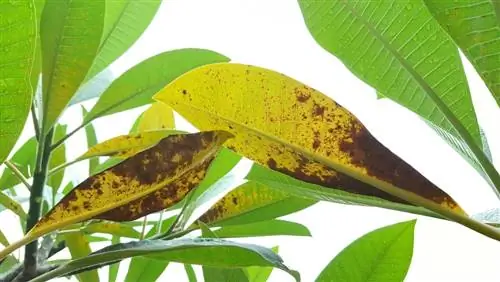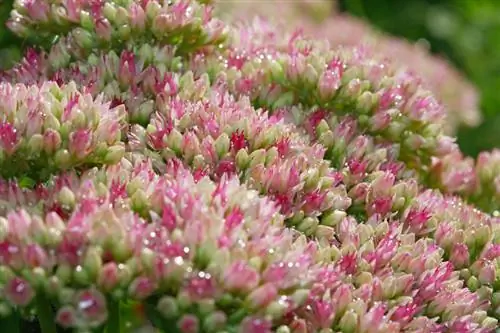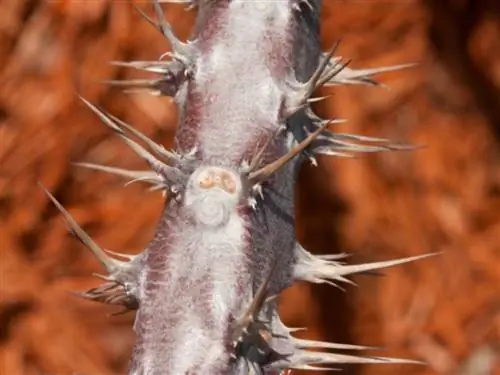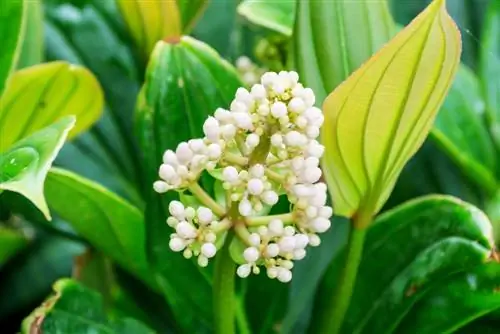- Author admin [email protected].
- Public 2023-12-16 16:46.
- Last modified 2025-01-23 11:21.
Frangipani is not easy to care for. As soon as care or location is not right, diseases occur - more often than with other houseplants. What diseases do you need to watch out for and how can you prevent them?
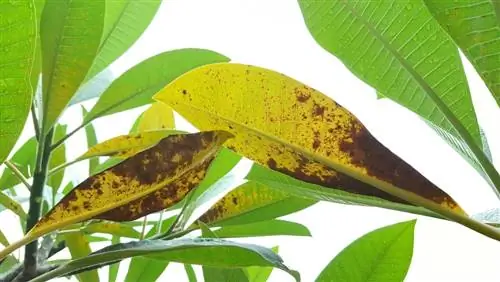
What diseases can occur with frangipani and how to prevent them?
Frangipani Diseases can be caused by fungal diseases, burns, premature bud drop or deformed leaves. Incorrect care, unfavorable location and unclean garden tools contribute to the development of these diseases. You can prevent them by good watering behavior, slowly acclimating to sunlight and repotting less often.
Plumeria diseases usually caused by care errors
- Fungal diseases
- Burns
- premature bud drop
- deformed leaves
Most frangipani diseases are caused by incorrect care or an unfavorable location. Sometimes the transmission of pathogens through unclean garden tools also leads to illness.
Fungal diseases of plumeria
Fungal diseases mainly occur if you water the frangipani too well. It does not tolerate waterlogging and may only be watered very sparingly in winter.
An illness caused by fungi can cause very different symptoms. Be alert if the stem or leaves appear to be becoming soft. Colored dots often appear on the leaves.
If the plumeria is infected by fungi, the only option is to cut it back radically to remove already diseased shoots. If the root is affected, you can usually no longer save the frangipani.
Leaf burns
The leaves suffer from burns if you take the frangipani out of its winter quarters and place it directly in the sun. Slowly acclimate the plant to bright sunlight.
Deformed leaves due to frequent repotting
If the leaves are deformed, you have probably repotted the plumeria too early or too often. Frangipani is only placed in a new pot every three to five years so that the plant does not suffer too much stress.
Premature bud drop
If the buds fall off before they have opened, the frangipani may be too dark. Frequent change of location can also cause bud drop. Also check the plant for pests.
If the plumeria has become lazy to bloom, you have fertilized it too well. Frangipani may only be fertilized until flowering begins and needs a rest period of four to six months in winter.
Leaf drop in autumn is not a disease
If the frangipani sheds its leaves in autumn, this is not a sign of disease. The plant then goes into the dormant phase. Next year the leaves will sprout again.
Tip
Frangipani is often plagued by pests. Always treat an infestation of spider mites, lice and whiteflies immediately to prevent the plant from dying.

